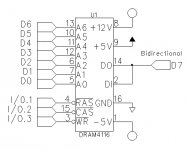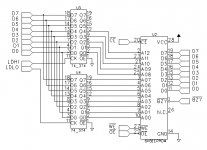PhilipA
Veteran Member
What I had seen until now- power up. Screen comes on to raster. Continuous beep from speaker. Blank screen. Drive motors spin continuously.
Insert (soft sectored) floppy disk, in either drive. Beep beep beep beep beep so long as the disc is in. Blank screen.
Previously, the lower drive would CLIK and engage the read/write head mechanism (head clamp) but would not move the heads.
Pressing the reset button causes raster to de-stabilize then come back to a rectangle, beep resumes about 1/4 second later. Blank screen.
What others have said- "It beeps until you give it a disc. If the disc you give it does not contain boot code, it would fill the screen with 0 or 1 depending on the drive you put the wrong disc in"
--Phil
Insert (soft sectored) floppy disk, in either drive. Beep beep beep beep beep so long as the disc is in. Blank screen.
Previously, the lower drive would CLIK and engage the read/write head mechanism (head clamp) but would not move the heads.
Pressing the reset button causes raster to de-stabilize then come back to a rectangle, beep resumes about 1/4 second later. Blank screen.
What others have said- "It beeps until you give it a disc. If the disc you give it does not contain boot code, it would fill the screen with 0 or 1 depending on the drive you put the wrong disc in"
--Phil



